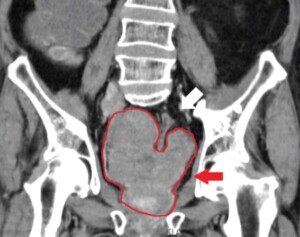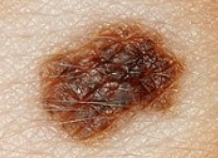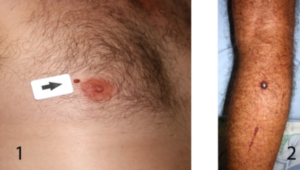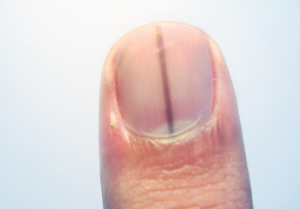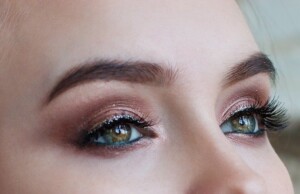There are quirky neurotypicals.
There are non-autistic people who have what would be considered autistic traits.
Have you ever known a “different kind” of person, yet at the same time, would never think of them as autistic?
Or maybe you’ve met some people whom you suspect are autistic, but if they were to be assessed for autism, would be declared neurotypical or perhaps having only ADHD instead.
Not every owner of “autistic traits” is on the autism spectrum.
Struggling with Eye Contact
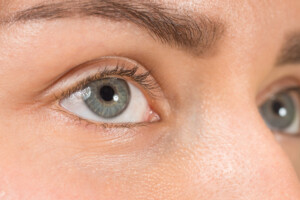
Freepik.com/master1305
Many autistic people (percentage unknown) find it uncomfortable to maintain eye contact for longer than a few seconds.
While some people on the spectrum have no problem holding eye contact, others find it stressful and try very hard to avoid it.
Weak eye contact is strongly associated with autism: an “autistic trait.”
However, “Some individuals with social anxiety exhibit poor eye contact,” says Dr. Meghan T. Lee, clinical neuropsychologist and practice owner, Horizon Neuropsychological Services in Colorado.
This gaze aversion in such an individual would usually be tied to lack of confidence or being easily intimidated, depending on the circumstance.
Hyper-focus on Interests

©Lorra Garrick
Another iconic trait of autism spectrum is that of so-called special interests.
While a neurotypical might be fascinated by sharks and enjoy watching YouTube videos of sharks on a daily basis (they’re actually extremely popular), the autistic individual with a special interest in sharks will go beyond this and may focus almost exclusively on shark attacks or some other component such as the lateral line or a particular species of shark.
They may view YouTubes of shark attacks over and over, pausing at various points of the attack to stare and analyze; chasing down every image they could find of fatal shark attack wounds and staring; talking about shark attacks with anyone who’ll listen; drawing shark attacks; even wishing they could be bitten by a shark to show off the scar.
Neurotypicals can be hyper-focused, for instance, NTs who study sharks for a living – going into the water with tiger and bull sharks just to get them on film or retrieve data devices attached to the sharks.
But it’s their job, and like some jobs (e.g., police officer, logging, roof repair), they understand the inherent dangers.
But when they come home from their job, they’re not going to be talking about sharks every chance they can get and be thinking about them while they’re on the toilet, brushing their teeth, showering and driving.
“Some individuals with ADHD can become hyper-focused on their interests and talk about their interest at length,” begins Dr. Lee.
“However, the difference with ADHD is that individuals tend to drop their hyper-focused interest after short periods of time and move onto the next interest which may or may not be related to the initial interest.”
Repetitive Behaviors

©Lorra Garrick
Another key feature of ASD is the so-called repetitive behaviors.
Examples include rocking, swaying, tapping one’s face, chewing on one’s tongue, nibbling on their cuticles, twirling an object, hand flapping, finger flicking, rubbing their fingers together, pressing their palms together, bouncing a foot up and down, toe-walking – there’s actually no limit to how repetitive behaviors or “stimming” present.
This menagerie of movements is done repetitively. Stims can also be vocal, such as grunting and humming.
However, “There are also individuals with OCD who may exhibit repetitive behaviors or rituals despite being socially fluid,” says Dr. Lee.
OCD is obsessive compulsive disorder. But there’s a huge difference between the reason for the repetitive behaviors of OCD and those of ASD.
The actual behavior itself may be the same. For instance, a person with OCD has an overwhelming need to grunt 10 times, in two close sets of five, every time they exit their car to go into a doctor’s office.
They consciously do this because they think it’ll bring them good luck with the doctor exam.
If they don’t perform the grunting ritual, the doctor might find something wrong.
An autistic person who grunts usually does so subconsciously, and may not even realize just how much they’ve been grunting all morning long.
However, in autism, a person may also very willfully stim, such as deeply sniffing their hair or engaging in prolonged staring at a screensaver.
Stimming may be done out of habit, or to self-regulate, self-soothe or ease general tension such as while on the job. It may even be done because it feels good.
Missing Social Cues

Freepik.com/DCStudio
A person with social anxiety “may miss social cues because they are focused on internal thoughts (e.g., planning what to say next, questioning whether they are liked by others, etc.),” says Dr. Lee.
One of the hallmark features of autism spectrum is that of “missing” social cues.
But the miss with an autist isn’t necessarily because they were preoccupied with internal thoughts.
In fact, the person with autism who “misses” a social cue may have, at that instant, been maintaining good eye contact and not being distracted by any internal thoughts.
But because of the autistic wiring of their brains, the nonverbal communication that they saw was misinterpreted.
Or, it’s possible that despite the autist maintaining a gaze on the other person, they didn’t “see” a nonverbal cue, and thus, missed it. They also sometimes don’t know what to look for as far as social or nonverbal cues.
Had the person with social anxiety literally seen a nonverbal social cue instead of being distracted by internal thoughts, they likely would have understood its intended meaning as well as any other neurotypical.
Thus, the difference here is as follows: social anxiety = didn’t see the cue; ASD = saw the cue but misinterpreted it (and sometimes with no awareness that they misinterpreted it).
A social cue can also be in the form of vocal nuance, which can be overlooked by a person without autism whose mind is preoccupied with wondering what to say next.
An autistic person may be closely paying attention to the voice that’s speaking to them and still either not pick up on nuances or, pick up on them but get them wrong.
When non-autistic people engage in any of the aforementioned behaviors, they can be seen as quirky, odd or a bit strange.
 Horizon Neuropsychological Services, LLC, owned by Dr. Meghan T. Lee, conducts neuropsychological evaluations for all ages. Our doctors evaluate for many conditions including autism spectrum disorder, ADHD, anxiety, depression, OCD, psychosis and behavioral difficulties. Our doctors show how patients can build upon their strengths and work around their weaknesses to be the best version of themselves.
Horizon Neuropsychological Services, LLC, owned by Dr. Meghan T. Lee, conducts neuropsychological evaluations for all ages. Our doctors evaluate for many conditions including autism spectrum disorder, ADHD, anxiety, depression, OCD, psychosis and behavioral difficulties. Our doctors show how patients can build upon their strengths and work around their weaknesses to be the best version of themselves.
 Lorra Garrick has been covering medical and fitness topics for many years, having written thousands of articles for print magazines and websites, including as a ghostwriter. She’s also a former ACE-certified personal trainer. In 2022 she received a diagnosis of Level 1 Autism Spectrum Disorder.
Lorra Garrick has been covering medical and fitness topics for many years, having written thousands of articles for print magazines and websites, including as a ghostwriter. She’s also a former ACE-certified personal trainer. In 2022 she received a diagnosis of Level 1 Autism Spectrum Disorder.
.
Top image: ©Lorra Garrick
Can Autism Be Ruled Out if the Patient Has Good Eye Contact?














